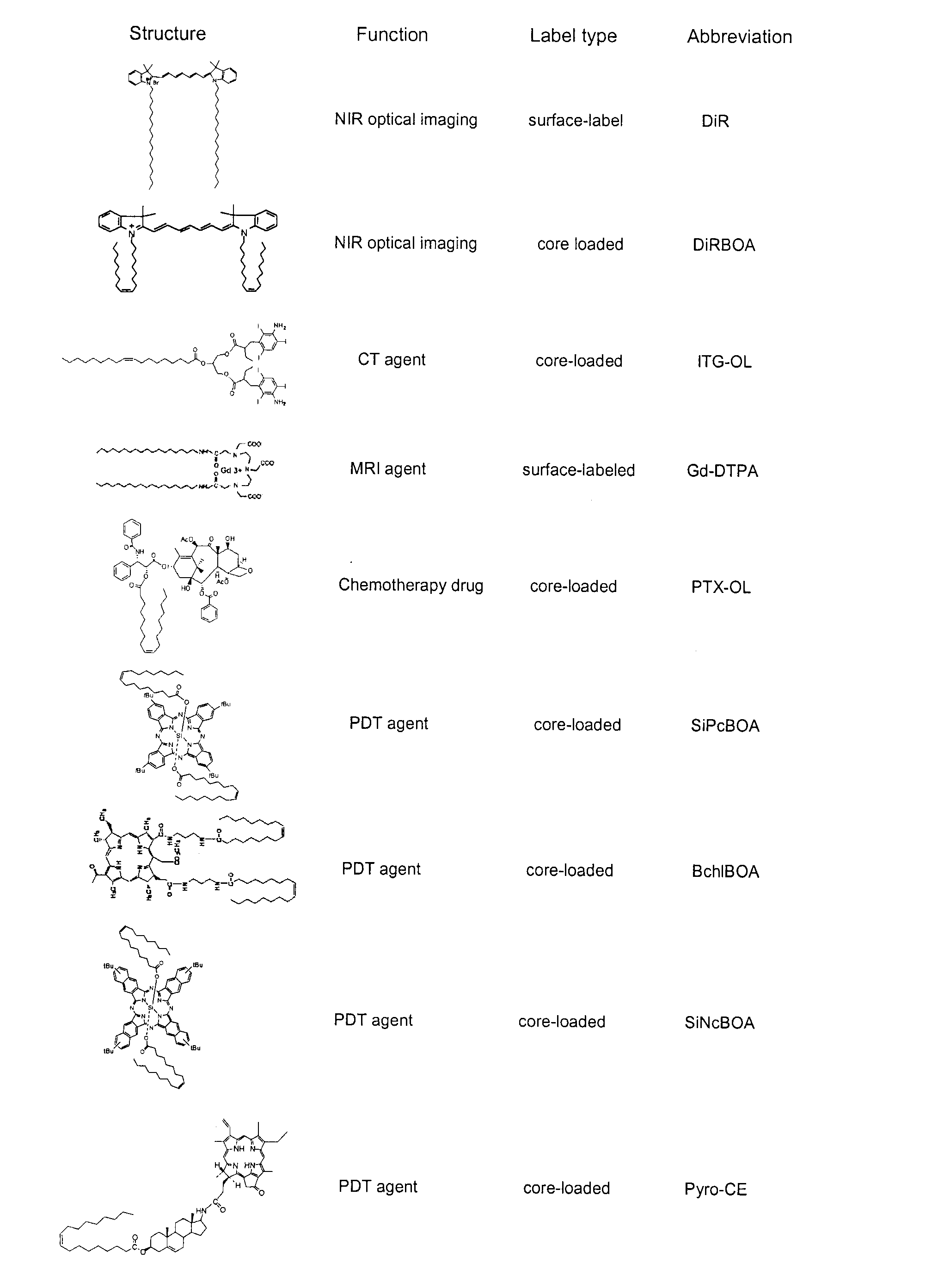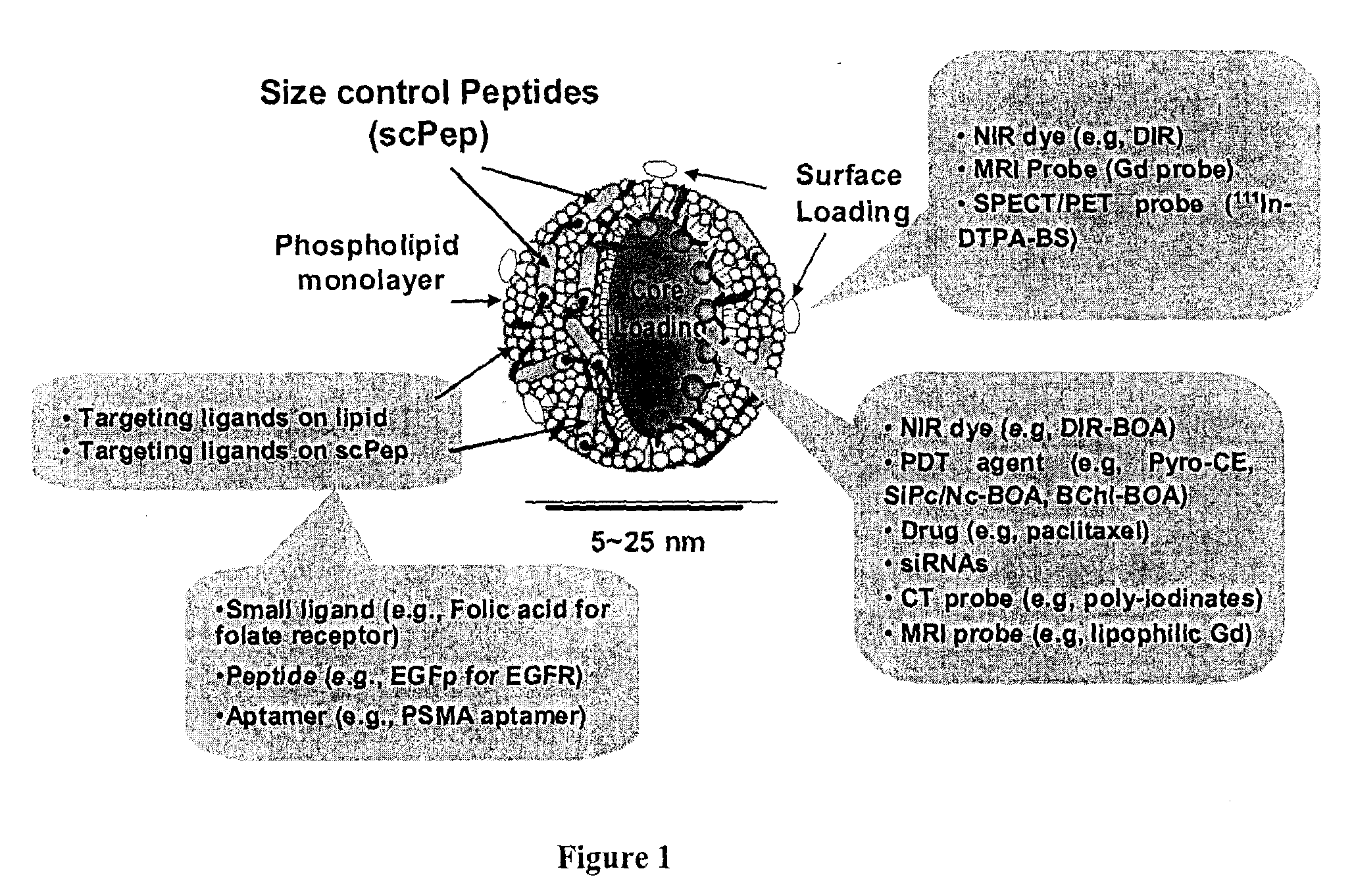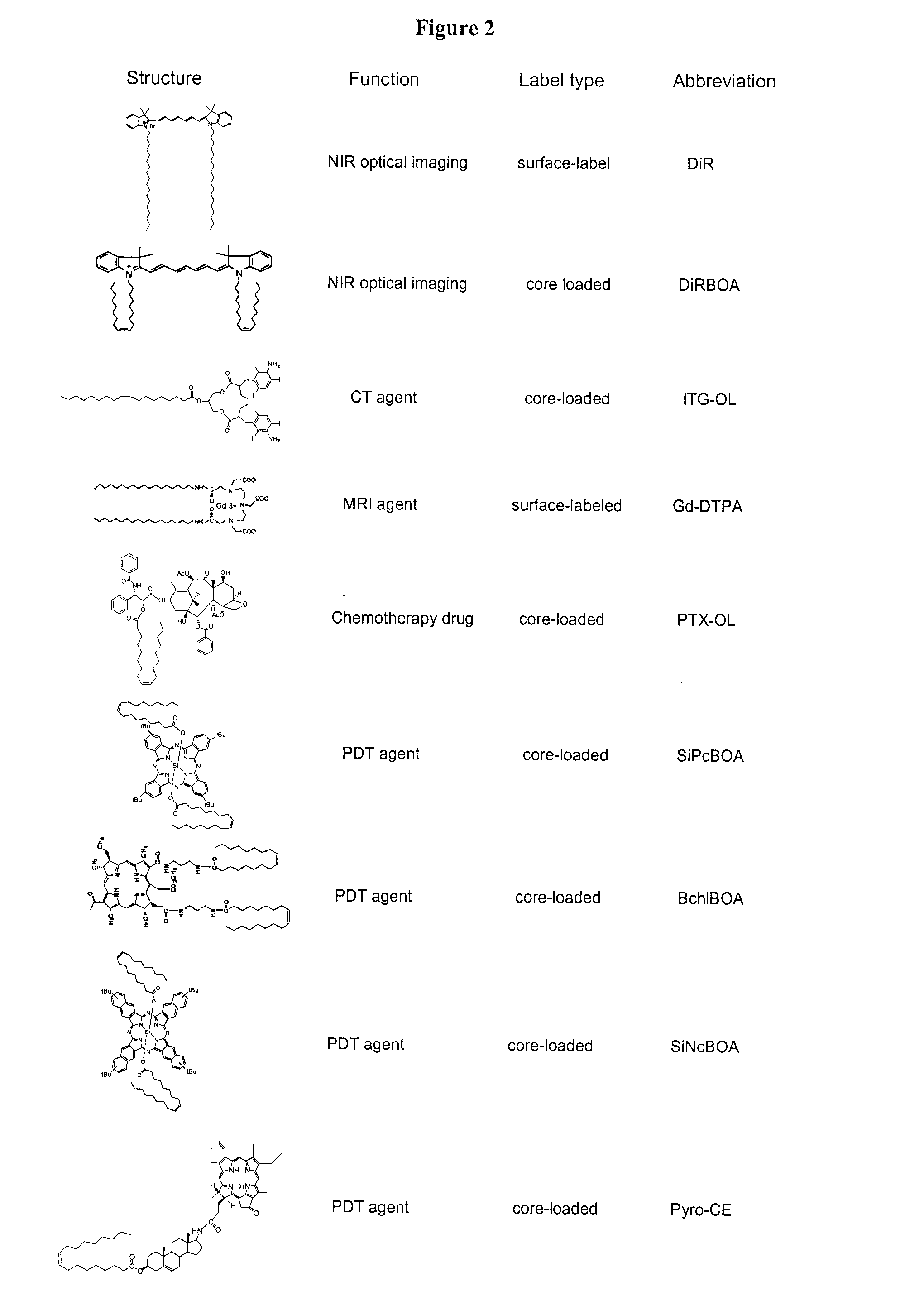High-density lipoprotein-like peptide-phospholipid scaffold ("hpps") nanoparticles
a phospholipid scaffold and high-density lipoprotein technology, applied in the direction of depsipeptides, powder delivery, peptide/protein ingredients, etc., can solve the problems of rare nanoplatforms made of naturally occurring nanostructures, biocompatibility problems, and biocompatibility problems
- Summary
- Abstract
- Description
- Claims
- Application Information
AI Technical Summary
Problems solved by technology
Method used
Image
Examples
example 1
Preparation of Starting Materials
[0191]1) Size Control Peptide (scPep)
[0192]A few short peptide analogs of amphipathic helices, such as Ac-DWLKAFYDKVAEKLKEAF (“2F”), Ac-DWFKAFYDKVAEKFKEAF (“4F”, also referenced herein as “+4F”)), and Ac-FAEKFKEAVKDYFAKFWD (−4F) were synthesized on peptide synthesizer PS-3 (Protein Technologies, Inc.) by using Fmoc solid phase peptide synthesis (SPPS) protocol (Novabiochem, Resource for peptide synthesis: http: / / www.emdbiosciences.com / g.asp?f=NBC / peptideres.htm) using commercially available N-α-Fmoc protected amino acids, Sieber amide resin as a solid support and HBTU / HOBt as a carboxyl-group activating agent. After synthesis of the protected sequence, the N terminal Fmoc of peptide-resin was removed with 20% piperidine in N,N-dimethylformamide (DMF) to expose the terminal amine. The NH2-peptide-resin was then capped with 10% pyridine in tetrahydrofuran with 10% acetic anhydride. The Ac-peptide-resin was further treated by 95% trifluoroacetic acid an...
example 2
Method for HPPS Nanoparticle Preparation
[0200]The HPPS is a macromolecule complex that is fully soluble in aqueous buffers, such as tris-saline (10 mM tris-HCl, 150 mM NaCl, 1 mM EDTA, pH 7.5). Tris-saline buffer was used as the solvent for HPPS in all of the experiments outlined below.
[0201]1) HPPS: 3 μmol of DMPC and 0.3 μmol of cholesteryl oleate were dissolved in 0.5 mL of chloroform in a test tube. The solvent was slowly evaporated with N2 and further dried by high vacuum. 1 mL of buffer (10 mM Tris-HCl, pH 8.0, containing 0.1 M KCl, 1 mM EDTA) was added to the dry test tube afterwards and sonicated for 1 hr at 50° C. to form emulsion. The scPep 0.8 μmol was added to solution to form HPPS particle. The particle was then purified by fast protein liquid chromatography (FPLC). The FPLC method will be described below.
[0202]2) DiR-BOA core-loaded HPPS ((DiR-BOA) HPPS): Three μmol of DMPC and 0.3 μmol of cholesteryl oleate and 0.25 μmol of DiR-BOA were dissolved in 0.5 mL of chlorofo...
example 3
Characterization of HPPS Nanoparticles Prepared Using 4F
[0209]1. Particle and payload stability: Particle and payload stability are essential for all nanoparticle-based drug delivery systems. Conventional lipid-based nanocarriers (e.g., liposomes and lipid emulsions) cannot maintain stability at ultra small size (<25 nm). The HPPS nanocarrier system of the present invention displays remarkable stability. As shown in Table 4, over one month period, HPPS maintains their size and DiR-BOA payload, as determined by dynamic light scattering (see below) and fluorospectrophotometry. No payload leakage was observed after storage at 4° C. Note the percentages in Table below indicate the proportion of the population of nanoparticles that have the indicated size.
TABLE 4Particle stabilityHPPS Prep.Size MeasurementSize MeasurementSize MeasurementFluorescenceDIRBOAFluorescenceDIRBOAon Jul. 3, 2007July 9July 14Aug 4July 19Aug 412.4 nm, 99%10.9 nm, 99%13.7 nm, 99%Em = 1.07 × 107Em = 1.14 × 107(at 77...
PUM
| Property | Measurement | Unit |
|---|---|---|
| Diameter | aaaaa | aaaaa |
| Diameter | aaaaa | aaaaa |
| Diameter | aaaaa | aaaaa |
Abstract
Description
Claims
Application Information
 Login to View More
Login to View More - R&D
- Intellectual Property
- Life Sciences
- Materials
- Tech Scout
- Unparalleled Data Quality
- Higher Quality Content
- 60% Fewer Hallucinations
Browse by: Latest US Patents, China's latest patents, Technical Efficacy Thesaurus, Application Domain, Technology Topic, Popular Technical Reports.
© 2025 PatSnap. All rights reserved.Legal|Privacy policy|Modern Slavery Act Transparency Statement|Sitemap|About US| Contact US: help@patsnap.com



